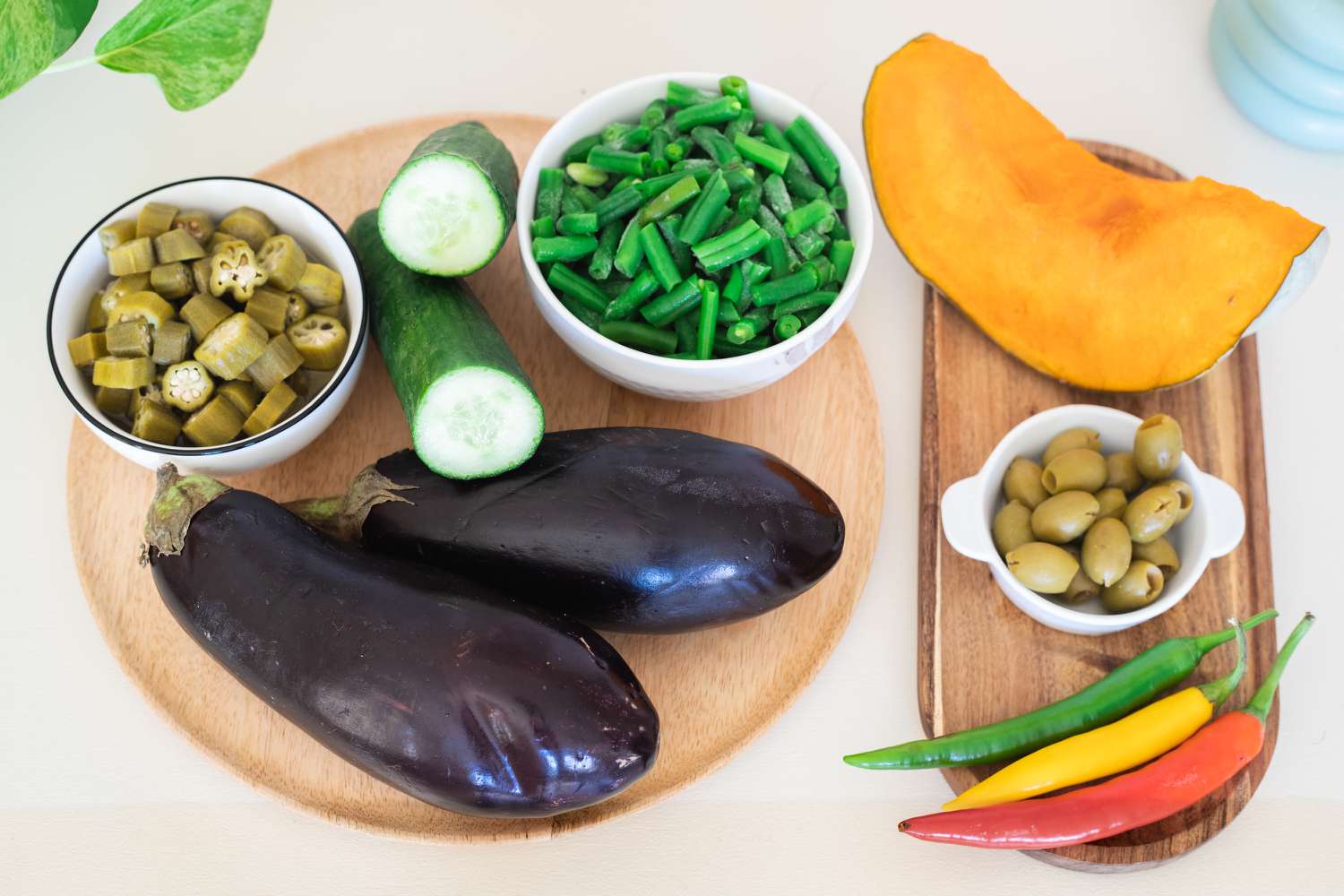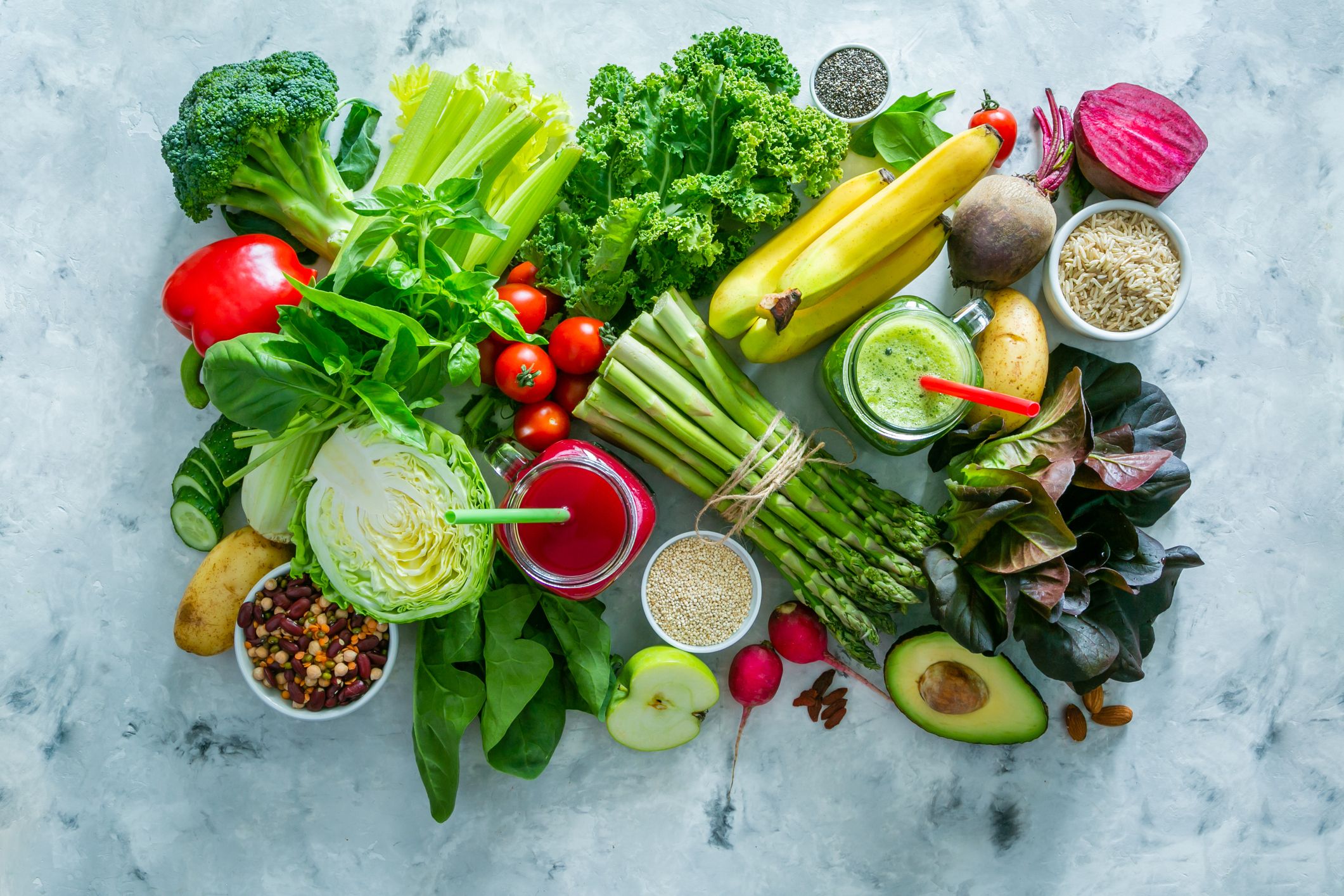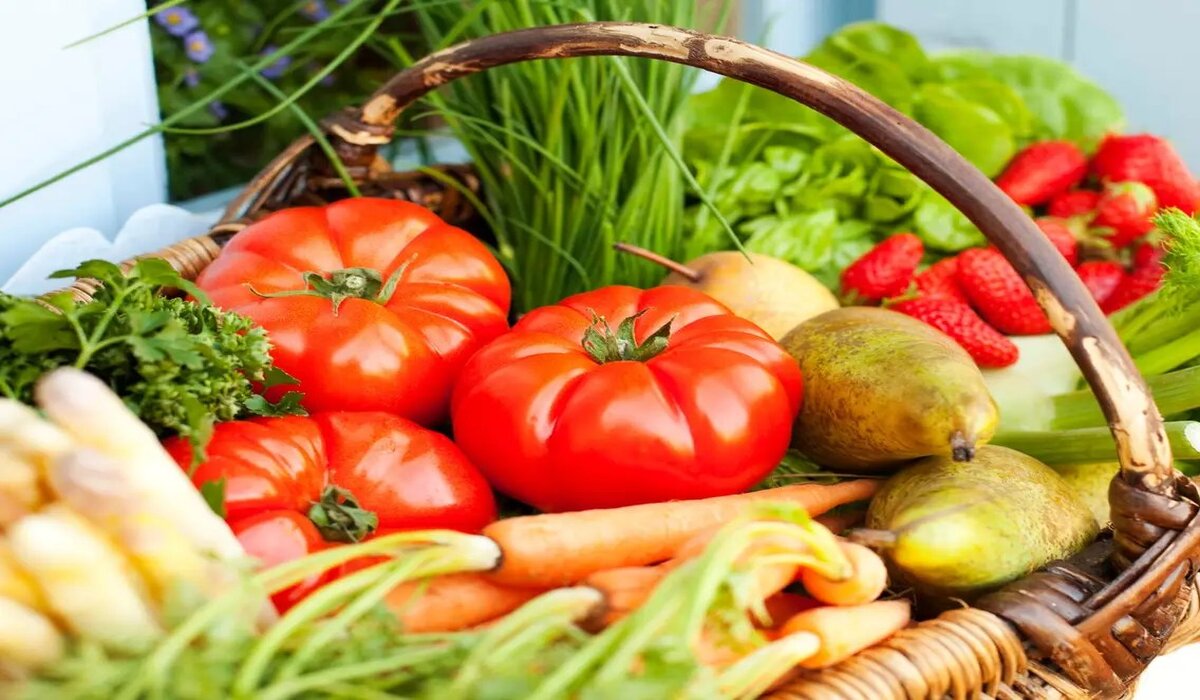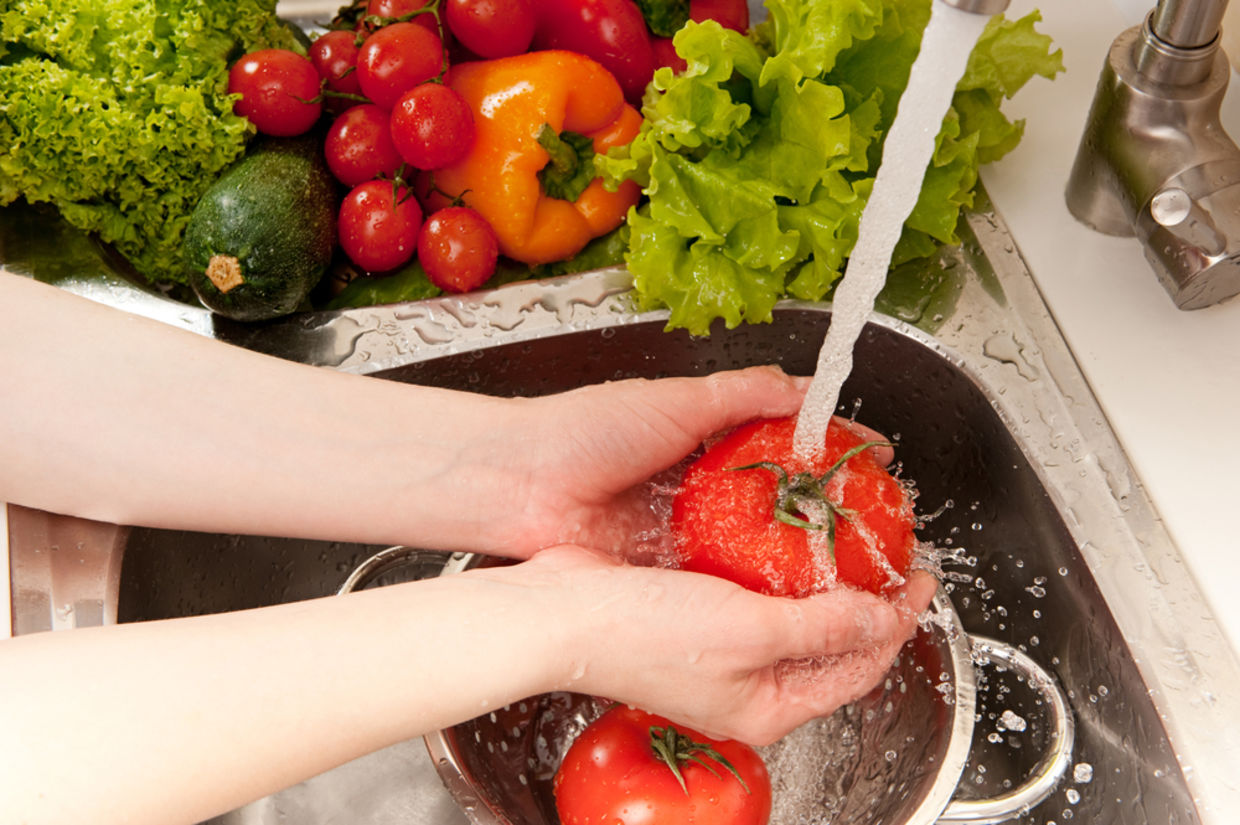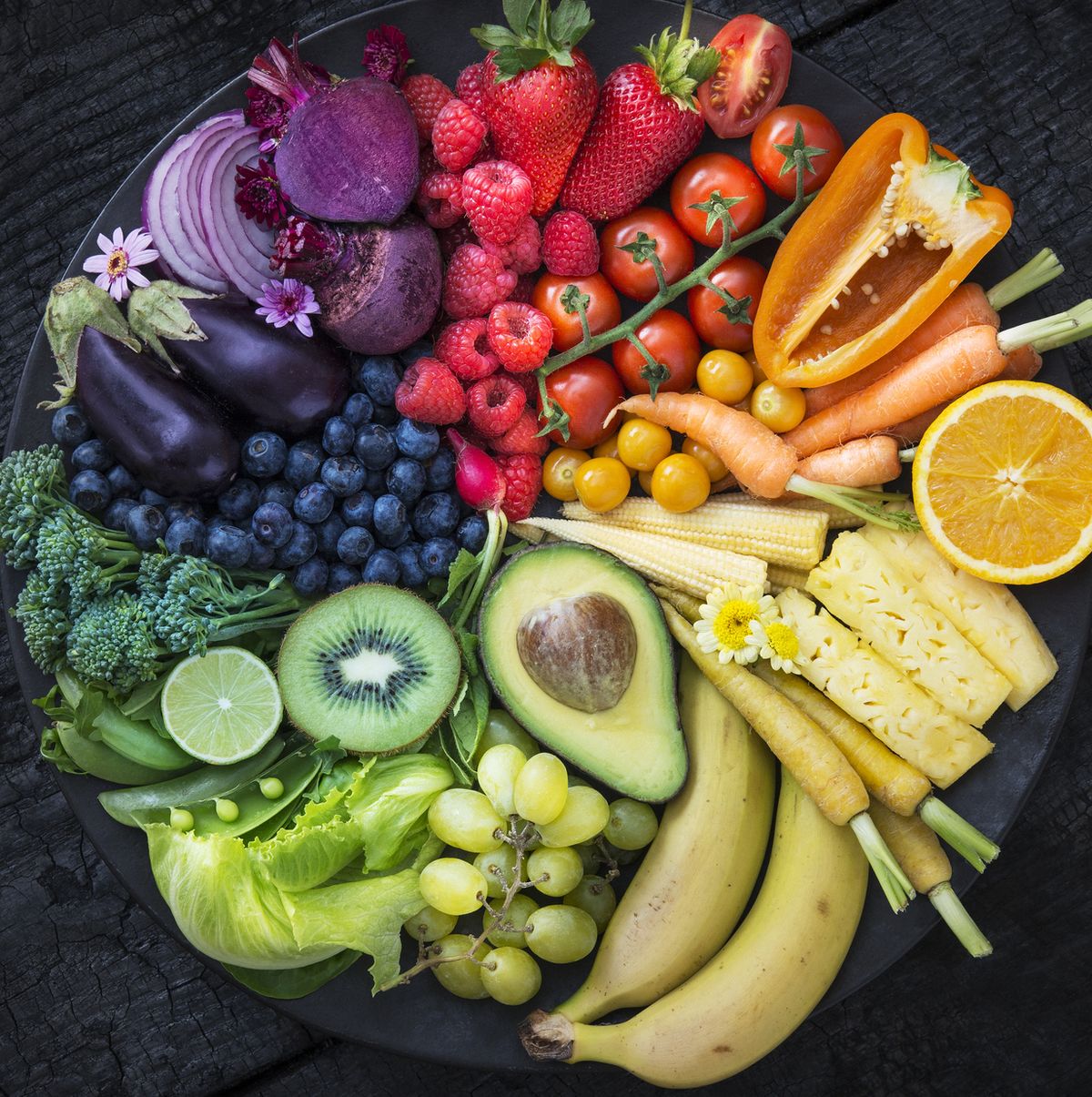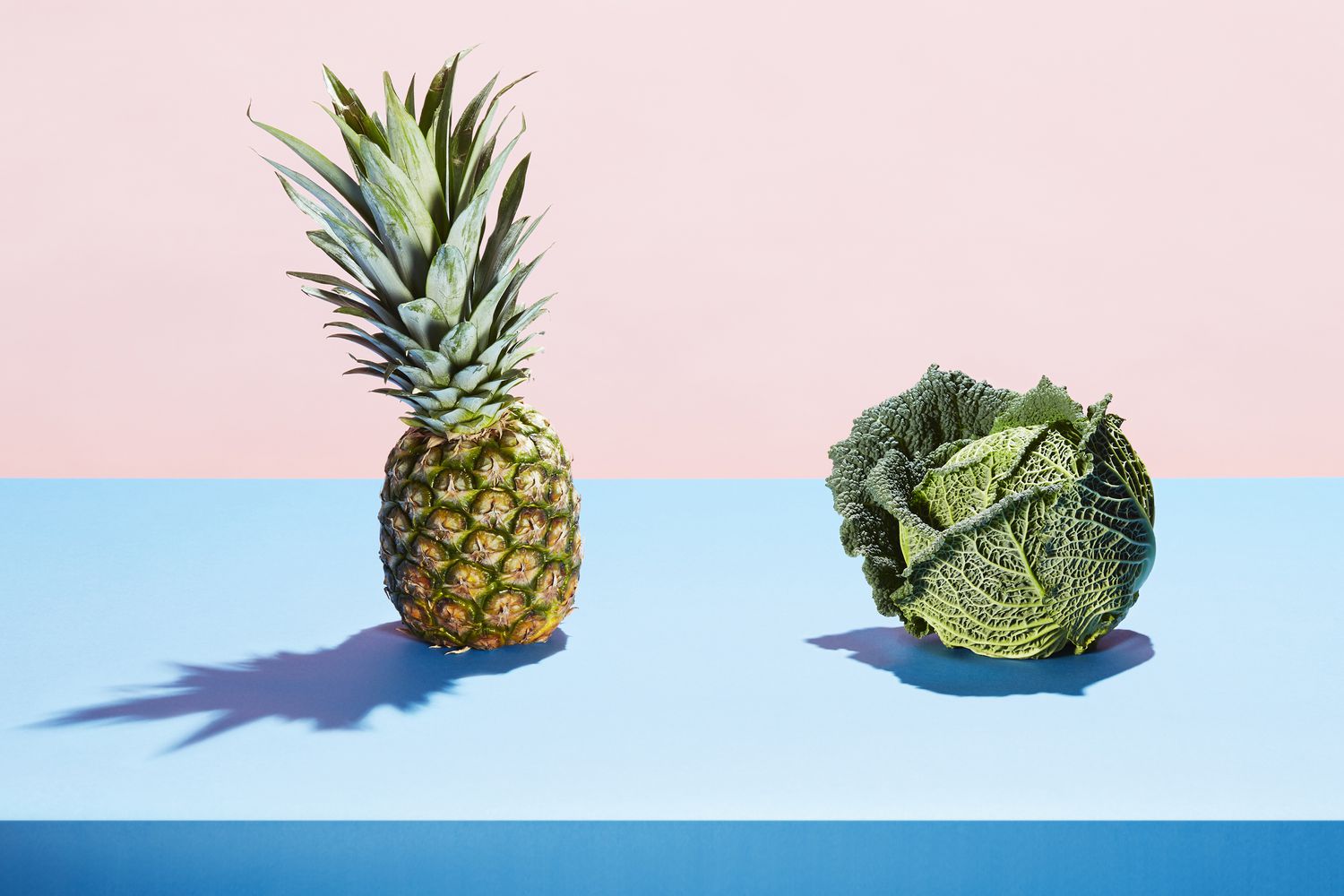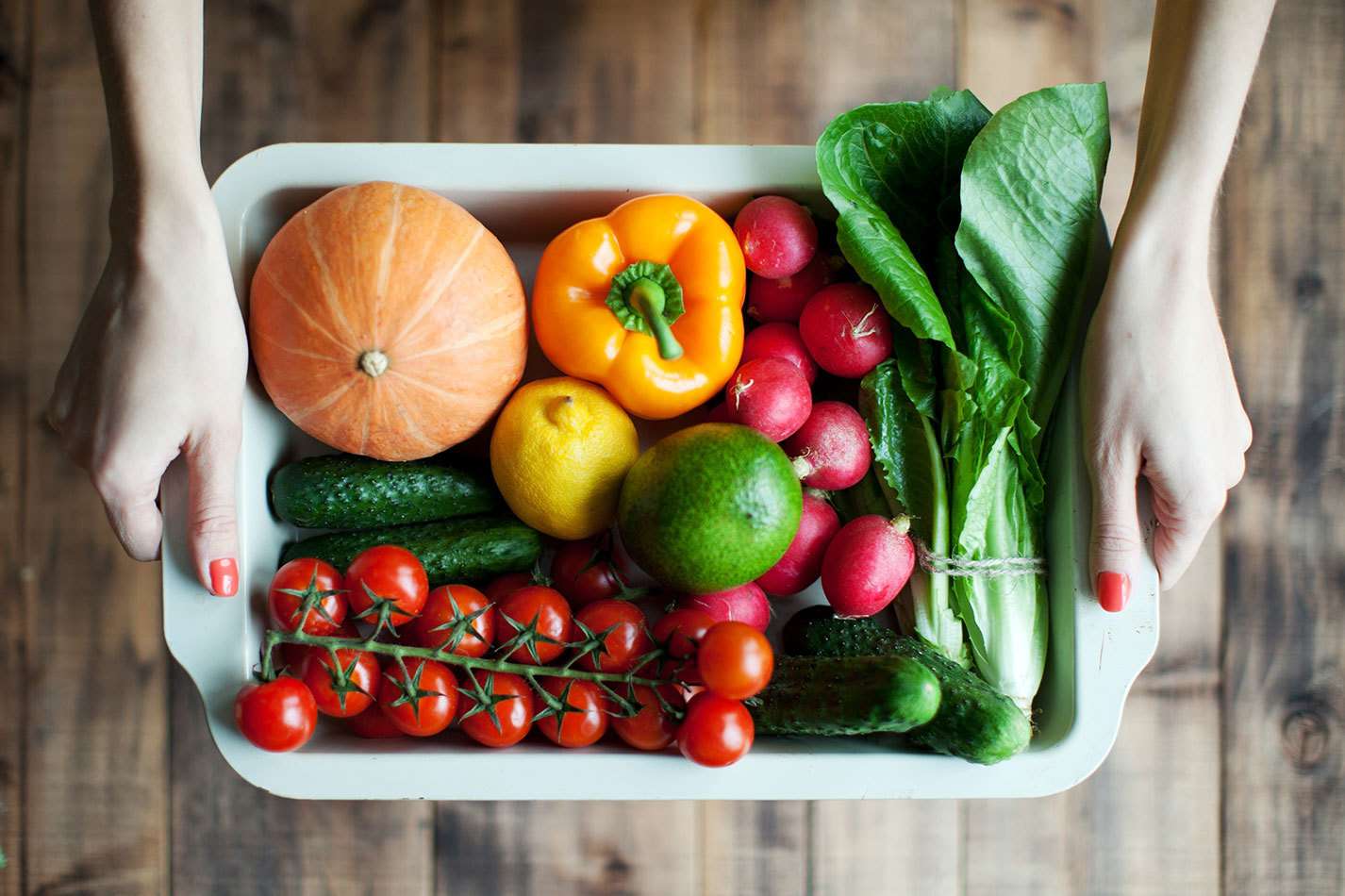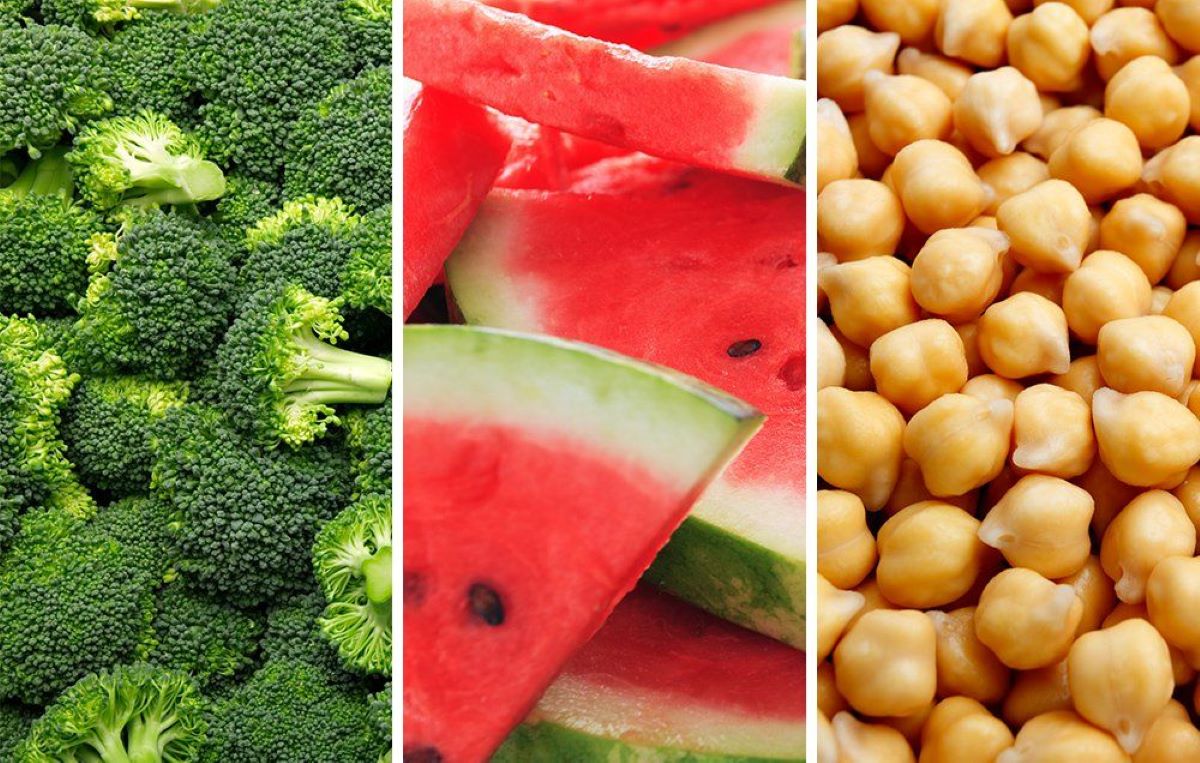Home>Gardening News and Trends>Latest News>How To Store Fruits And Vegetables


Latest News
How To Store Fruits And Vegetables
Modified: January 22, 2024
Discover the latest news on how to store fruits and vegetables to keep them fresh and flavorful. Tips and tricks for proper storage to maximize your produce's shelf life and nutritional value.
(Many of the links in this article redirect to a specific reviewed product. Your purchase of these products through affiliate links helps to generate commission for Chicagolandgardening.com, at no extra cost. Learn more)
Table of Contents
Introduction
Proper storage of fruits and vegetables is key to preserving their freshness, flavor, and nutritional value. Whether you have a bountiful harvest from your backyard garden or have purchased a variety of produce from the local market, knowing how to store them correctly will help you make the most of your produce and reduce wastage.
Storing fruits and vegetables optimally not only helps to extend their shelf life but also maintains their quality and texture. There are specific storage techniques that work best for different types of produce, considering factors such as humidity, temperature, and ethylene sensitivity.
In this article, we will delve into the importance of proper storage, general tips for storing fruits and vegetables, specific storage tips for common fruits and popular vegetables, as well as guidelines for storing leafy greens. Additionally, we will share some practical tips on how to extend the shelf life of your produce and highlight common mistakes to avoid when storing fruits and vegetables.
By following these recommendations, you can ensure that your fruits and vegetables stay in optimal condition for longer, minimizing waste and allowing you to enjoy fresh and nutritious produce for an extended period.
Importance of Proper Storage
Proper storage of fruits and vegetables is of utmost importance for several reasons. Firstly, it helps to preserve the freshness and flavor of the produce. By storing fruits and vegetables correctly, you can retain their natural sweetness, crispness, and juiciness, ensuring a delightful sensory experience when consuming them.
Secondly, proper storage helps to maintain the nutritional value of fruits and vegetables. Many essential vitamins, minerals, and antioxidants are sensitive to heat, light, and air exposure. By storing produce in the right conditions, you can help preserve these nutrients, allowing you to benefit fully from the nutritional goodness of your fruits and vegetables.
Moreover, proper storage can significantly extend the shelf life of fruits and vegetables. Many of us have experienced the frustration of buying beautiful, fresh produce only to find it wilted or spoiled within a few days. By implementing the correct storage techniques, you can prolong the lifespan of your fruits and vegetables, reducing food waste and saving money in the long run.
Proper storage also plays a crucial role in preventing the growth of harmful bacteria and fungi. Exposure to moisture and improper air circulation can encourage the growth of microorganisms, increasing the risk of foodborne illnesses. By storing produce in clean and well-ventilated conditions, you can minimize these risks and ensure the safety of your food.
Lastly, efficient storage can improve overall organizational efficiency in your kitchen. When you store fruits and vegetables in a systematic and orderly manner, it becomes easier to identify and use them when needed. This helps to reduce food spoilage and ensures that you utilize all your produce effectively.
By understanding the importance of proper storage, you can take the necessary steps to ensure the longevity, quality, and nutritional value of your fruits and vegetables. In the following sections, we will provide you with valuable tips and techniques to help you store your produce in the most optimal way.
General Tips for Storing Fruits and Vegetables
When it comes to storing fruits and vegetables, there are some general guidelines that apply to most produce. These tips will help to maintain the freshness and quality of your fruits and vegetables:
- Separate ethylene producers and ethylene-sensitive produce: Some fruits, such as apples, bananas, and tomatoes, produce a natural gas called ethylene, which can speed up the ripening process of other fruits and vegetables. To prevent premature spoilage or over-ripening, keep ethylene-producing fruits separate from ethylene-sensitive produce.
- Avoid washing produce before storing: Moisture promotes the growth of mold and bacteria. It is best to leave fruits and vegetables unwashed until you are ready to use them. However, brush off any dirt or debris before storing.
- Store in appropriate humidity: Some fruits and vegetables thrive in high humidity, while others prefer low humidity. High humidity helps to prevent wilting, so store leafy greens and herbs in a slightly damp paper towel or breathable bag. On the other hand, low humidity is ideal for fruits and vegetables that are prone to rot, such as berries, asparagus, and mushrooms.
- Use breathable storage containers: Opt for containers that allow airflow to reduce moisture build-up. Use perforated bags, mesh bags, or containers with ventilation holes to keep produce fresh. Avoid storing fruits and vegetables in plastic bags that can trap moisture and promote spoilage.
- Keep away from direct sunlight: Exposure to sunlight can accelerate the ripening process and lead to quality deterioration. Store produce in a cool, dark place, such as a pantry or cellar, or in the refrigerator if appropriate.
- Check regularly for spoilage: It’s essential to inspect stored fruits and vegetables regularly. Remove any spoiled produce immediately to prevent the spread of mold and bacteria to other items.
By following these general tips, you can ensure that your fruits and vegetables stay fresh, flavorful, and ready to be enjoyed for as long as possible.
Specific Storage Tips for Common Fruits
Here are some specific storage tips for common fruits that will help you maintain their freshness and flavor:
- Apples: Store apples in a cool place, such as the refrigerator crisper drawer. Keep them separate from other produce, as they release ethylene gas that can cause nearby fruits and vegetables to ripen quickly.
- Citrus fruits: Oranges, lemons, and limes can be stored at room temperature for up to a week. For longer storage, place them in the refrigerator. Wrap them individually in a loose plastic bag to retain moisture.
- Berries: Berries are delicate and prone to mold, so it’s best to consume them within a few days. Store them unwashed in a single layer in a container lined with paper towels to absorb excess moisture. Keep them in the refrigerator.
- Bananas: To slow down the ripening process, separate bananas from the bunch and store them at room temperature. If you want to ripen them quickly, place them in a paper bag with an apple or tomato.
- Grapes: Store grapes in a breathable bag or container in the refrigerator. They can keep for up to a week. Rinse them just before consumption to maintain their freshness.
- Peaches and nectarines: These fruits are best ripened at room temperature. Once they are ripe, store them in the refrigerator to prolong their shelf life.
- Pears: Pears can be stored at room temperature until they are ripe. Once ripe, you can transfer them to the refrigerator to prevent over-ripening.
- Pineapples: Store whole pineapples at room temperature until they are fully ripe. Once ripe, you can store cut pineapples in an airtight container in the refrigerator for about 3-5 days.
Remember to regularly check for any signs of spoilage or overripeness in your stored fruits, and remove any affected pieces promptly to prevent further decay.
By following these specific storage tips for common fruits, you can enjoy their optimal freshness and taste for a longer period.
Specific Storage Tips for Popular Vegetables
Here are some specific storage tips for popular vegetables that will help you keep them fresh and flavorful:
- Carrots: Remove the leafy tops before storing carrots in the refrigerator. Place them in a plastic bag with some moisture to maintain their crispness.
- Lettuce: Remove any wilted leaves from the lettuce head. Store it in a plastic bag or airtight container lined with paper towels to absorb excess moisture. Keep it in the refrigerator.
- Tomatoes: Keep tomatoes at room temperature until they are fully ripe. Once ripe, you can store them in the refrigerator to slow down the ripening process and extend their shelf life.
- Cucumbers: Store whole cucumbers in the refrigerator crisper drawer. If you have cut cucumbers, wrap them tightly in plastic wrap or place them in an airtight container to prevent moisture loss.
- Bell peppers: Store unwashed bell peppers in a plastic bag or airtight container in the refrigerator. Avoid placing them near ethylene-producing fruits as it can cause them to spoil faster.
- Broccoli: Keep broccoli in the refrigerator. To prevent moisture loss, wrap the stem in a damp paper towel and store it in a plastic bag or produce container.
- Onions: Store onions in a cool, dry, and well-ventilated area, away from direct sunlight. Avoid storing them near potatoes as the moisture released by potatoes can cause onions to spoil.
- Spinach: Store unwashed spinach in a plastic bag or airtight container lined with paper towels to absorb excess moisture. Keep it in the refrigerator crisper drawer.
It’s important to note that some vegetables, like potatoes and winter squash, prefer slightly cooler and darker storage conditions, such as a cool cellar or pantry. Be sure to conduct proper research for specific storage recommendations for each type of vegetable.
By following these specific storage tips for popular vegetables, you can ensure that they stay fresh, crisp, and delicious for an extended period, allowing you to enjoy their flavors and nutritional benefits.
Storage Tips for Leafy Greens
Leafy greens, such as lettuce, kale, and spinach, can be delicate and prone to wilting. To keep them fresh and crisp, follow these storage tips:
- Remove any damaged or wilted leaves: Before storing leafy greens, inspect them for any signs of spoilage. Remove any damaged or wilted leaves to prevent the spread of decay.
- Wash and dry properly: Before storing, rinse leafy greens under cool running water to remove any dirt or debris. Gently pat them dry with a clean kitchen towel or use a salad spinner to remove excess moisture.
- Wrap in a damp paper towel: To maintain the desired level of moisture, wrap the cleaned and dried leafy greens loosely in a damp paper towel. This will help to provide the necessary humidity while preventing them from becoming too wet and slimy.
- Store in a breathable bag or container: Place the wrapped greens in a breathable bag or container, such as a perforated plastic bag or a produce container with ventilation holes. This allows for proper air circulation and helps to prevent moisture build-up.
- Keep in the refrigerator: Store leafy greens in the refrigerator crisper drawer, as this area tends to have slightly higher humidity levels compared to other parts of the refrigerator. It will help keep the greens fresh and crispy.
- Use them within a few days: Leafy greens are best consumed within a few days of purchase or harvest. As time goes on, they will start to lose their freshness and nutritional value.
- Avoid storing near ethylene-producing fruits: Just like with other produce, avoid storing leafy greens near fruits that produce ethylene gas, such as apples and bananas. Ethylene can accelerate the process of wilting and spoilage in leafy greens.
Remember to periodically check your stored leafy greens for any signs of spoilage. Remove any leaves that have wilted or turned slimy to prevent the spread of decay to the rest of the greens.
By following these storage tips, you can extend the freshness and quality of your leafy greens, making them more enjoyable to consume in salads, smoothies, and cooked dishes.
Tips for Extending Shelf Life
If you want to extend the shelf life of your fruits and vegetables even further, here are some additional tips to consider:
- Freezing: Many fruits and vegetables can be preserved by freezing. Before freezing, ensure that they are clean and dry. For maximum freshness, blanch vegetables and use airtight containers or freezer bags to minimize exposure to air.
- Canning: Canning is another method of preserving fruits and vegetables for longer-term storage. Follow proper canning techniques and guidelines to ensure food safety and quality.
- Preserving in brine or vinegar: Pickling vegetables in a brine or vinegar solution can help extend their shelf life and add flavor. This method is commonly used for cucumbers, beets, and green beans.
- Dehydrating: Dehydrating fruits and vegetables removes the moisture, making them less susceptible to spoilage. Use a food dehydrator or oven set at a low temperature to dry them thoroughly.
- Properly storing herbs: Fresh herbs can be stored for longer by placing them in a glass of water, like a bouquet, and covering them loosely with a plastic bag. Alternatively, you can dry and store them in airtight containers.
- Rotate your produce: To avoid waste and ensure freshness, adopt a “first in, first out” practice. Use older produce first and rotate your stock regularly to prevent any fruits or vegetables from being forgotten and left to spoil.
- Store root vegetables separately: Root vegetables like potatoes, onions, and garlic should be stored in a separate cool, dark, and well-ventilated area. This will prevent them from sprouting and affecting the freshness of other produce.
- Use proper containers: Ensure that your storage containers, whether plastic bags, containers, or jars, are clean and properly sealed to maintain the freshness and quality of your produce.
By employing these additional tips for extending shelf life, you can make the most of your fruits and vegetables and reduce food waste.
Common Mistakes to Avoid
When it comes to storing fruits and vegetables, there are several common mistakes that people tend to make. By avoiding these pitfalls, you can ensure better preservation and quality of your produce:
- Storing all produce together: Different types of fruits and vegetables have different storage requirements. Storing them all together can lead to cross-contamination, premature spoilage, and flavor transfer. It’s important to separate produce based on ethylene production and sensitivity.
- Washing produce before storing: While it’s important to wash fruits and vegetables before consumption, washing them before storage can introduce excess moisture. This can lead to mold growth and premature spoilage. Only wash produce right before you are ready to use it.
- Storing produce in sealed plastic bags: Plastic bags may seem like a convenient option for storing produce, but they can actually trap moisture and promote mold growth. Opt for breathable bags, mesh bags, or paper bags to allow for proper air circulation.
- Storing produce at the wrong temperature: Different fruits and vegetables require different temperature conditions. Storing produce at temperatures that are too low or too high can impact their flavor, texture, and shelf life. Be mindful of the ideal storage temperatures for each type of produce.
- Ignoring signs of spoilage: It’s important to regularly check your stored fruits and vegetables for any signs of spoilage. Remove any visibly spoiled or moldy pieces immediately to prevent the spread of decay to other items.
- Overcrowding the refrigerator: When the refrigerator is packed too tightly, air circulation is restricted, leading to uneven cooling and increased humidity. This can accelerate spoilage. Keep the refrigerator organized and avoid overcrowding to maintain optimal storage conditions.
- Not rotating produce: It’s easy to forget about the fruits and vegetables tucked away at the back of the fridge. Not rotating your produce can result in some items languishing and becoming spoiled. Make it a habit to rotate your produce, using older items first.
- Ignoring specific storage requirements: Each type of fruit and vegetable has specific storage requirements. Ignoring these guidelines can result in decreased freshness, flavor, and nutritional value. Take the time to research and understand the ideal storage conditions for the produce you have.
By avoiding these common mistakes, you can prolong the shelf life of your fruits and vegetables, minimize waste, and enjoy fresh and flavorful produce for longer.
Conclusion
Proper storage of fruits and vegetables is essential for maintaining their freshness, flavor, and nutritional value. By following the general tips for storing produce, as well as the specific storage tips for common fruits and popular vegetables, you can ensure that your fruits and vegetables stay in optimal condition for longer periods.
By understanding the specific storage requirements of different types of produce, you can prevent spoilage, extend shelf life, and reduce food waste. Whether it’s separating ethylene producers from ethylene-sensitive produce, using breathable storage containers, or storing at the appropriate temperature and humidity levels, these practices will help you maximize the lifespan and quality of your fruits and vegetables.
Additionally, learning how to properly store leafy greens and adopting techniques to extend the shelf life of your produce further can help you enjoy fresh and nutritious fruits and vegetables beyond their typical lifespan.
By avoiding common mistakes such as storing all produce together, washing produce before storage, and ignoring signs of spoilage, you can ensure that your efforts in storing fruits and vegetables are effective and successful.
Remember, the key to successful storage is maintaining an optimal environment for your produce, which includes proper humidity levels, temperature control, and air circulation. By implementing these storage practices, you can enjoy your fruits and vegetables at their peak freshness, reducing waste and maximizing the value of your produce.
So, take the time to store your fruits and vegetables correctly and make the most of the bountiful harvest or the produce you purchase. With proper storage, you can savor the flavors, reap the nutritional benefits, and minimize food waste, all while enjoying a variety of fresh and nutritious fruits and vegetables.
